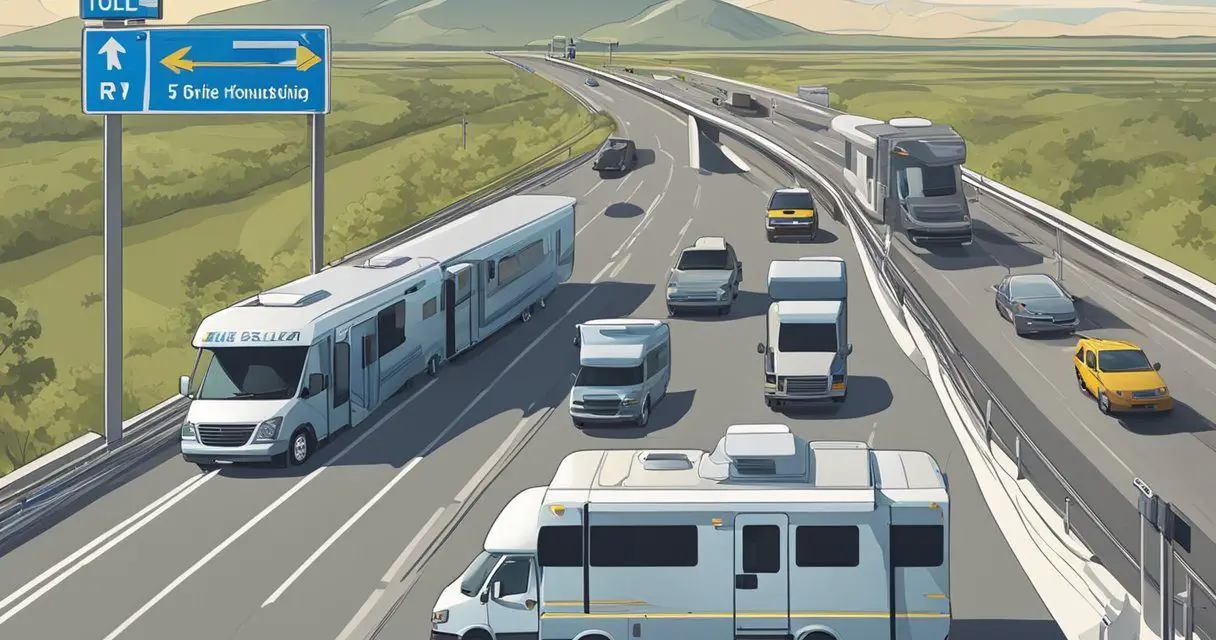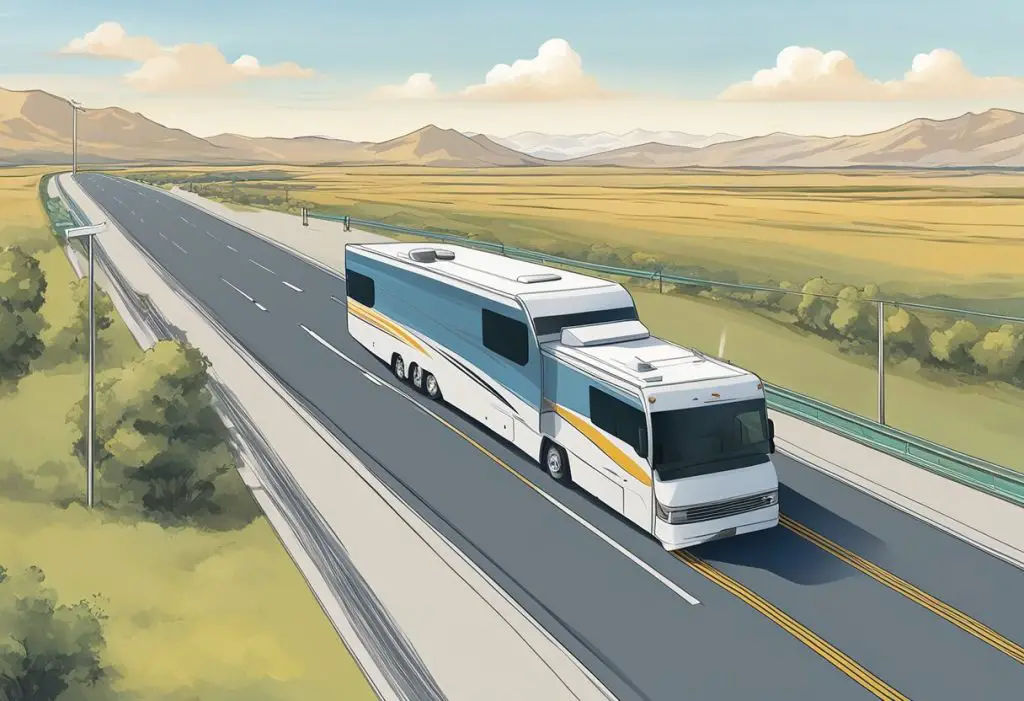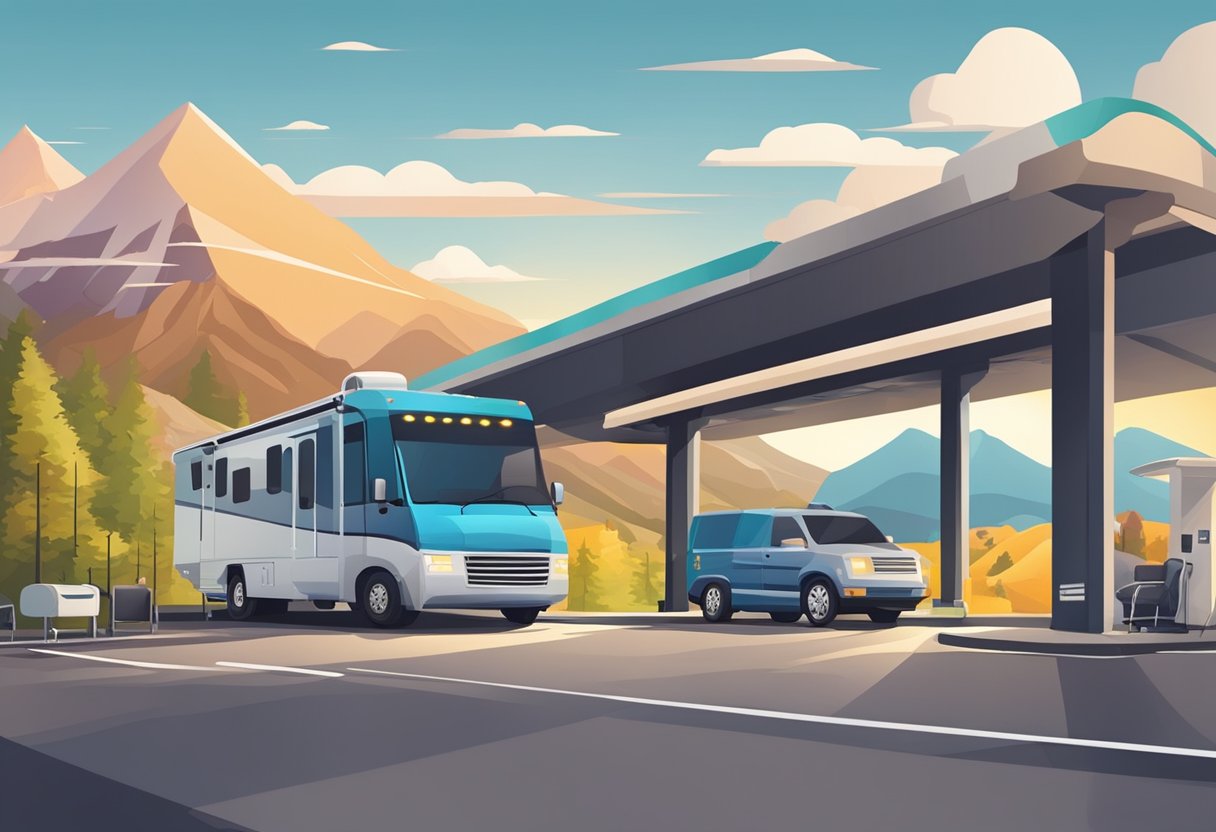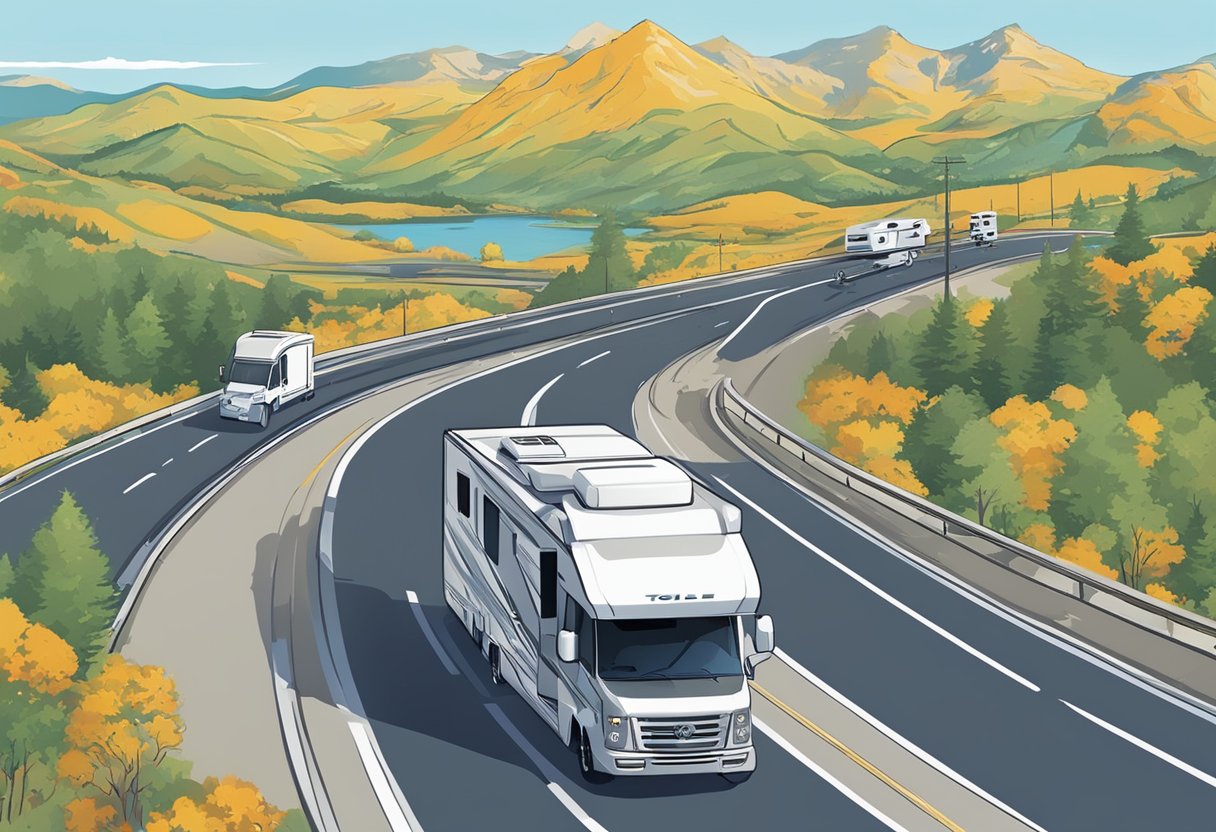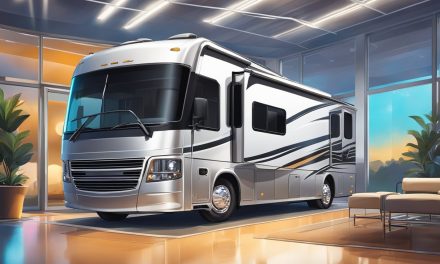Would you like to save this article?
Navigating toll roads can be tricky, especially when driving an RV. Understanding the unique challenges and requirements encountered along these routes ensures a smoother and hassle-free journey for RV travelers.
Planning ahead and knowing what to expect can save time and reduce stress. With the right information, RV owners can confidently tackle toll roads, from payment options to choosing the right lanes.
1) Plan Your Route Ahead
Before setting off on an RV adventure, it’s essential to map out the route in advance. By identifying toll roads and alternative paths, travelers can avoid unexpected costs and delays.
Using RV-specific GPS or route-planning apps helps find roads suitable for larger vehicles. These tools provide crucial information about road compatibility and toll requirements.
Researching toll agencies along the route can ensure smooth payments. Each agency may have different payment options and rules, so being informed can make the journey more hassle-free.
Considering peak times and potential traffic can also save time and reduce stress. Planning allows for a smoother, more enjoyable trip.
2) Keep an Eye on Toll Costs
Checking toll costs before starting a trip can save RV travelers a good amount of money. Google Maps and similar apps show estimated toll costs along the route. This helps in planning the journey effectively.
RV owners should also watch for toll violations. These fines can add up, so it’s wise to address any notices promptly.
Utilizing toll transponders like E-ZPass can also offer discounts on toll roads. This can make the journey more affordable and quicker. Keeping toll costs in check ensures a smoother travel experience for everyone.
3) Have Your Payment Methods Ready
Navigating toll roads can be a breeze if you have your payment methods sorted out in advance. Various states and regions in the U.S. have different toll systems, so it’s essential to understand which methods are accepted where you are traveling.
Many toll roads now use electronic payment systems, such as SunPass, E-ZPass, and Toll-By-Plate. Keeping a transponder in your RV can be very helpful, as these devices work across multiple toll areas. You can usually order one online and link it to your preferred payment method.
Besides electronic options, some toll roads still accept cash payments. Always carry some cash just in case you find yourself on a road without electronic payment capabilities. Also, consider using navigation apps that alert you to upcoming toll roads and their specific payment methods. This foresight ensures a smoother journey.
4) Use RV-Friendly Navigation Tools
Navigating toll roads with an RV can present unique challenges. Utilizing RV-friendly navigation tools can make your journey smoother.
RV-specific apps like CoPilot GPS and inRoute provide routes suitable for larger vehicles. These apps offer turn-by-turn directions and identify RV-friendly stops and amenities.
Some apps provide weather updates and alerts, which can be especially helpful on long trips. Subscriptions often unlock additional features, enhancing your travel experience.
For iPhone users, inRoute offers specialized navigation. Alternatively, Roadtrippers provides RV-safe routing and information on overnight camping options. Ensure your chosen app meets your specific needs and preferences.
5) Understand Height and Weight Limits
When driving an RV on toll roads, it’s crucial to know your vehicle’s height and weight limits. Many toll bridges and tunnels have specific restrictions.
Check the maximum height and weight limits posted on signs before entry. Exceeding these limits can result in fines or vehicle damage.
Plan your route by researching toll bridges and tunnels ahead of time. This ensures you avoid routes that your RV cannot safely navigate.

